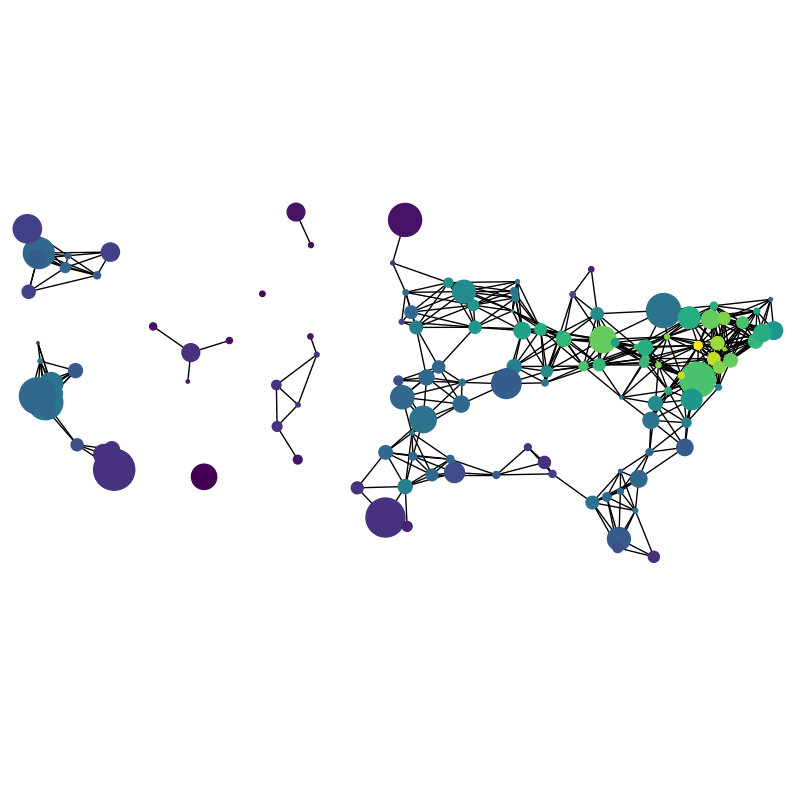Knuth Miles¶
miles_graph() returns an undirected graph over the 128 US cities from
the datafile miles_dat.txt. The cities each have location and population
data. The edges are labeled with the distance betwen the two cities.
This example is described in Section 1.1 in Knuth’s book (see [1] and [2]).
References.¶
| [1] | Donald E. Knuth, “The Stanford GraphBase: A Platform for Combinatorial Computing”, ACM Press, New York, 1993. |
| [2] | http://www-cs-faculty.stanford.edu/~knuth/sgb.html |

Out:
Loaded miles_dat.txt containing 128 cities.
digraph has 128 nodes with 8128 edges
# Author: Aric Hagberg (hagberg@lanl.gov)
# Copyright (C) 2004-2018 by
# Aric Hagberg <hagberg@lanl.gov>
# Dan Schult <dschult@colgate.edu>
# Pieter Swart <swart@lanl.gov>
# All rights reserved.
# BSD license.
import re
import sys
import matplotlib.pyplot as plt
import networkx as nx
def miles_graph():
""" Return the cites example graph in miles_dat.txt
from the Stanford GraphBase.
"""
# open file miles_dat.txt.gz (or miles_dat.txt)
import gzip
fh = gzip.open('knuth_miles.txt.gz', 'r')
G = nx.Graph()
G.position = {}
G.population = {}
cities = []
for line in fh.readlines():
line = line.decode()
if line.startswith("*"): # skip comments
continue
numfind = re.compile("^\d+")
if numfind.match(line): # this line is distances
dist = line.split()
for d in dist:
G.add_edge(city, cities[i], weight=int(d))
i = i + 1
else: # this line is a city, position, population
i = 1
(city, coordpop) = line.split("[")
cities.insert(0, city)
(coord, pop) = coordpop.split("]")
(y, x) = coord.split(",")
G.add_node(city)
# assign position - flip x axis for matplotlib, shift origin
G.position[city] = (-int(x) + 7500, int(y) - 3000)
G.population[city] = float(pop) / 1000.0
return G
if __name__ == '__main__':
G = miles_graph()
print("Loaded miles_dat.txt containing 128 cities.")
print("digraph has %d nodes with %d edges"
% (nx.number_of_nodes(G), nx.number_of_edges(G)))
# make new graph of cites, edge if less then 300 miles between them
H = nx.Graph()
for v in G:
H.add_node(v)
for (u, v, d) in G.edges(data=True):
if d['weight'] < 300:
H.add_edge(u, v)
# draw with matplotlib/pylab
plt.figure(figsize=(8, 8))
# with nodes colored by degree sized by population
node_color = [float(H.degree(v)) for v in H]
nx.draw(H, G.position,
node_size=[G.population[v] for v in H],
node_color=node_color,
with_labels=False)
# scale the axes equally
plt.xlim(-5000, 500)
plt.ylim(-2000, 3500)
plt.show()
Total running time of the script: ( 0 minutes 0.113 seconds)